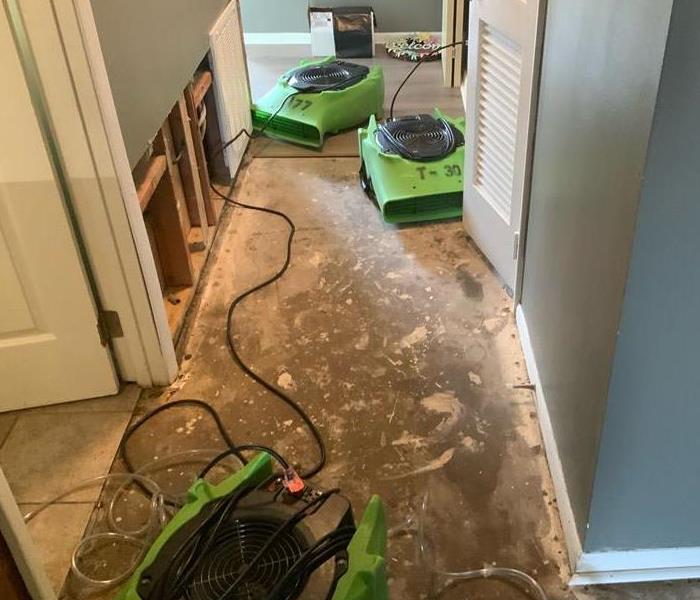Two Things To Consider During Water Restoration Damages
6/22/2020 (Permalink)
We effectively tackle water restoration damages by defining the classes of water.
We want our customers to be aware that water damage restoration is not solely water extraction from the damaged structure. Professionals in the restoration industry know that a developed drying plan needs to be implemented. As well, the professionals understand that each structure has different drying needs.
For all of those DIY individuals, please do not assume that merely placing drying equipment and spraying antimicrobial on products are all that the professionals do during restoration mitigation. To further detail, we are going to review some of the various aspects that restoration professionals need to consider when attending a water clean up job in Alpharetta.
Amount of Water
When one of our IICRC certified project managers arrives on site, the first thing that we are going to take note of is where the source of the water damage is coming from. The next thing we will note is the amount of water and type of water that has damaged the property. We can handle any size disaster; our most significant loss to date had over twenty SERVPRO personnel, the water loss onsite.
Water Type
When water damage occurs, it is essential to indicate what type of water damage is present. There are three main types of water damages: Black water, gray water, and clean water.
Category 1 Water Damage- Clean Water
Clean water damages are the most straightforward projects because there are fewer health risks that are associated with this type of water damage. In a clean water restoration project, the water typically comes from a treated source, meaning no waste products are apparent. These damages usually are from faulty appliances such as overflowing sinks, leaking roofs, and pipe bursts. Most damaged materials are salvageable when clean water damage affects a structure.
Category 2 Water Damage- Gray Water
Gray water damage is where there is water that carries waste products. A typical category two water damage will result from washing machine malfunctions, or dishwasher overflows. If a person was to drink or make any contact with gray water, there is a possibility that health risks will be involved. Our highly trained individuals will thoroughly clean and replace any affected materials affected by gray water, and please note that gray water never has human waste involved.
Category 3 Water damage- Black Water
Black water damages have been misunderstood because people have assumed that the water needs to be black; this is not the case. Black water damage is any water damage that has unsanitary water with debris that present health risks to humans and animals. A typical example of black water is water damage that results from broken sewage pipes or flood water damage. In the case of black water damage, SERVPRO of North Fulton will always remove all of the damaged materials involved in the water loss.
SERVPRO is known for being fast responders and will be at your property within 8 hours of your initial call. If your property has recently suffered from a water loss, please contact our office at (770) 992-2777.
More on Alpharetta.





 24/7 Emergency Service
24/7 Emergency Service
